A potentiometer whose value is digitally controlled.
A digital potentiometer is a digitally controlled electronic component that mimics the analog functions of a potentiometer. It is often used for trimming and scaling analog signals by microcontrollers. It is either built using an R-2R integrated circuit or a Digital-to-analog converter. The resistor ladder construction is the most common. Every step on the resistor ladder has its own switch which can connect this step to the output terminal of the digipot. The selected step on the ladder determines the resistance ratio of the digital potentiometer. The amount of steps of a digital potentiometer is normally indicated with a bit value e.g. 8 bits equals 256 steps. A digital potentiometer is often controlled by digital protocols like I²C and SPI, as well as more basic Up/Down protocols. Some typical uses of digital potentiometers are in circuits requiring gain control of amplifiers (frequently instrumentation amplifiers), small-signal audio-balancing, and offset adjustment.
Block diagram of X9C102P, 1K, 100 wiper tap points digital potentiometer:

 These devices are extremely useful in the modern, digitally controlled world, but have some limitations. While quite similar to a normal potentiometer, digital potentiometers are somewhat constrained by current limits in the tens of milliamperes. Also, most, if not all digital potentiometers limit the input voltage range to the digital supply range (often 0–5 VDC), so some ingenuity is often required when attempting to replace standard resistive potentiometers with digital potentiometers. Further, instead of the seemingly continuous control that can be obtained from a multiturn resistive potentiometer, digital potentiometers have discrete steps in resistance. Eight-bit pots (256-steps) are most common, but potentiometers between 5 and 10 bits (32 to 1024 steps) are available. A fourth constraint is that special logic is often required to check for zero crossing of an analog AC signal to allow the resistance value to be changed without causing an audible click in the output for audio amplifiers.
These devices are extremely useful in the modern, digitally controlled world, but have some limitations. While quite similar to a normal potentiometer, digital potentiometers are somewhat constrained by current limits in the tens of milliamperes. Also, most, if not all digital potentiometers limit the input voltage range to the digital supply range (often 0–5 VDC), so some ingenuity is often required when attempting to replace standard resistive potentiometers with digital potentiometers. Further, instead of the seemingly continuous control that can be obtained from a multiturn resistive potentiometer, digital potentiometers have discrete steps in resistance. Eight-bit pots (256-steps) are most common, but potentiometers between 5 and 10 bits (32 to 1024 steps) are available. A fourth constraint is that special logic is often required to check for zero crossing of an analog AC signal to allow the resistance value to be changed without causing an audible click in the output for audio amplifiers.